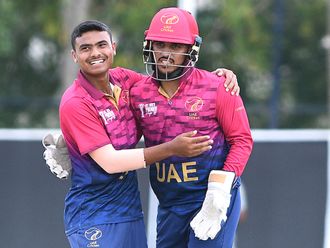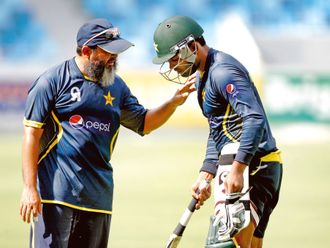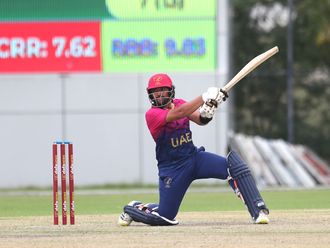An India-Pakistan final is what the International Cricket Council (ICC) would always crave for, no matter even if the recent results have been a little one-sided.
The world governing body had, somewhat brazenly, admitted the other day that they do manipulate the groupings in their marquee tournaments to ensure at least one battle between the arch rivals — and this time have a real bonus on their hands.
At a time when the Champions Trophy is still fighting for it’s relevance, despite the lifeline given to it four years back, such a final match-up is a huge endorsement for the tournament.
The overwhelming presence of expat crowds from both the subcontinental neighbours at the venues is indicative of the socioeconomic changes sweeping Britain and hence is ‘good for business’ in cricket.
However, this edition of the event will not only stand out for witnessing the first-ever final between these countries in a major ICC multi-nation event, but also a pointer to how the subcontinental cricketing nations have managed to win over the English conditions.
While the last four line-up boasted of the fast-improving Bangladesh along with champions India and Pakistan, even Sri Lanka showed there are enough reasons for hope in the post-Sangakkara and Jayawardene era.
It’s worth pondering over the fact how the English conditions, which have for generations held these countries in awe on a cricket pitch, had lost their enigmatic quality. The official diktat, both this year as well as the previous edition in 2013, was to produce wickets which would be perfect batting surfaces at all three venues — and it was Tamim Iqbal & Co who set the tone by neutralising a potent England attack and post a 300-plus total in the opening match at The Oval.
There was hardly any assistance off the wicket, barring the occasional grip and turn on a used surface for the spinners, and this certainly helped the batsmen to cope with the conditions better. The fresh wicket used at Edgbaston on Thursday for the semi-final, on which the heavyweight Indian batting line-up made a mockery of a target of 264, had a candid Virat Kohli admitting that the wicket was a beauty to bat on.
Add to this the extremely capable fast bowling units of India and Pakistan, even though the gifted Mustafizur Rehman of Bangladesh did not seem to be at his best. The green shirts, who pinned their strategy on their bowling strength, need to be thankful for the likes of Mohammad Amir, Junaid Khan and the skiddy Hasan Ali for turning the tables on the powerful batting line-ups of South Africa and England with their sustained pace and hostility.
Post script: As the collages of agony and ecstasy over the past two weeks pass off in a blur, it’s an image from a press conference that keeps haunting me — that of AB De Villiers. The acute sense of hurt was palpable on his face when ‘AB’ fielded two tough but inevitable questions — if he thought it was right for him to continue as one-day captain and the other, if he would continue to play till the 2019 World Cup.
The Superman of cricket, the man whom they call the most complete batsman in the planet, had perhaps never looked so helpless.
Cricket, as life, can be so cruel at times …










